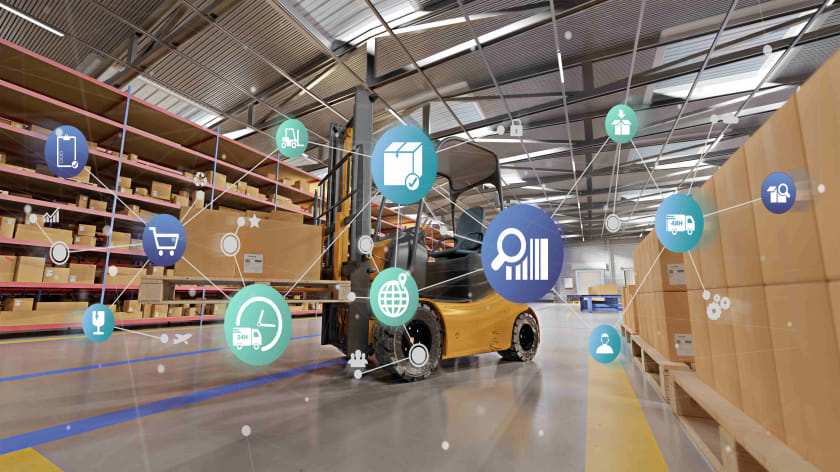Supply Chain Integration



Summary: Transparency of operations in a supply chain is a must to effectively manage a business supply chain. With advancements in technology, real-time information sharing has been made possible between different stakeholders responsible for procurement to delivery. This supply chain integration is a must to service modern-day end users.
A supply chain is the backbone of any modern-day business. In other words, it is logistics 2.0. Earlier, logistics, with its focus on transportation and warehousing, was the mainstay of any business operation. With brands adopting global sourcing and delivery policy, logistics evolved into supply chain management (SCM). Multiple stakeholders have come into play and are spread over a wide geopolitical area. This made the traditional processes of tracking and updating merchandise absolutely redundant.
Enter tech-based monitoring and information sharing. Technology has become an inevitable part of a global SCM to facilitate a seamless exchange of information between different departments and stakeholders. Over time, it became necessary to integrate the entire process with Artificial Intelligence (AI) for faster processing of orders and reliable deliveries. This brings us to the part where we discuss supply chain integration.
What Is Supply Chain Integration?
With the advent of SCM as a business practice, channeling information to all stakeholders in real time has become a must. This circuitous and often overlapping flow of information is not just restricted to the business vendors and managers. The customer is also an integral part of this network. Today’s hyper-connected users are demanding and tech-savvy. They want to know when their shipment is arriving. Supply chain integration makes this complex network of communication systems possible. And at the heart of this integrated framework of communications is the technology powered by AI.
Essential Components of Supply Chain Integration

For any business operating with a diverse procurement and delivery network, supply chain integration becomes a non-negotiable process. Whether it is procurement planning, placing orders with vendors, or successful logistics follow-up, supply chain integration ensures complete transparency right up to the last-mile delivery for a customer. Here are the key objectives of integrating the supply chain stakeholders with an effective communication system.
- Identifying suppliers and deciding on competitive pricing
- Tracking the status of procurement, once a vendor is onboard
- Monitoring the manufacturing status of goods with the vendor
- Tracking of consignment till it arrives at the warehouse
- Monitoring warehouse capacity for inbound and outbound shipment
- Tracking last-mile delivery and updating the customer
Benefits of Supply Chain Integration
- Flexibility in operations
Modern day-businesses run on adrenalin-powered procurements and same-day deliveries. Supply chain integration is a great enabler for managers to resize and revalue their orders and stocks in a rapidly changing market. This lends a competitive edge to dynamic businesses such as the fashion and clothing industry.

- Enables flawless logistics
The logistics of warehousing, inventorying and shipping require minimal wastage of time and resources. An integrated supply chain will reduce overstocking with smaller, optimized inventories. This brings down warehousing costs. Monitoring transport 24x7 expedites the shipping process.
- Picking reliable suppliers
With companies opting for global sourcing, it is difficult to vet every supplier. But backed by AI and a communications network, the bad apples can be flagged and the good ones, with their quality products and timely delivery, can stay on board.
- Tackling geopolitical developments
Global purchases get affected by geopolitical developments. Instances like the pandemic or shortage of gas in the EU lead to unexpected shutdowns and choke the supply lines. Procurement managers can now cancel supplies and reorder them at competitive prices in such events. They can also reassess their inventory to mitigate the impact of such events.
- Reliable and fast last-mile delivery
One of the biggest advantages of supply chain integration is servicing demanding customers. A tech-enabled communication system reduces the chances of unreliable deliveries. It also reduces the cost of shipping returns by enabling last-mile deliveries with personalized timings and payment options.
- Reduced spending

Supply chain integration not only facilitates better managerial decisions but also improves the bottom line of a business. Better forecasting and timely communication reduce supply, inventory, and shipping costs.
Technological Innovations in Communication Systems
While AI has been around for some time, fashion businesses are increasingly relying on robotization, cloud computing, and blockchain technology to make procurement channels more transparent and authenticate transactions with digital signatures that cannot be reversed. These technologies, combined with high-speed 5G internet, have exposed businesses to a new era of path-breaking communication. This is enabling procurement managers and logisticians to optimize supply and delivery processes and tackle disruptions to ensure fast and reliable delivery to the end user.
Managers are now able to scale up operations, optimize the use of human resources, and build a resilient supply chain. Data-fed enterprise solutions powered by cloud technology have also enabled organizations to communicate seamlessly.
Hop On to the Best Platform for Integrated Supply Solutions
If you are a stakeholder in the fashion industry or planning to start your entrepreneurial journey, you need to buffer your business from the vagaries of a dynamic marketplace! Fashinza can help your new business grow by introducing you to trusted suppliers and manufacturers. Connect with us at Fashinza, for businesses with AI-powered supply chain integration. Build popular fashion brands with a global procurement policy.



















